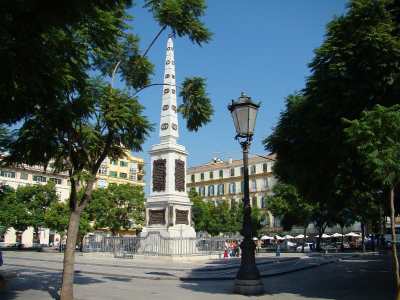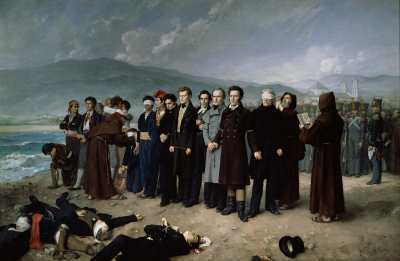José María de Torrijos y Uriarte
The story of how Torrijos and his men were shot on the beach in Málaga
One hundred and ninety one years ago, on December 11, 1831, a group of men led by General José María de Torrijos were executed by firing squad on a beach in Málaga after a failed liberal uprising against the abolitionist rule of Fernando VII.
The remains of 48 of the group now lie beneath a monument which stands in their honour in the Plaza de la Merced in the centre of Málaga City, while the body of Robert Boyd, a former British Army officer in India from Londonderry in Northern Ireland who had financed the revolt, was retrieved by the British Consul and buried in Málaga’s recently-inaugurated English Cemetery.

The monument in the Plaza de La Merced, Málaga - Photo www.spain-weather.com
General José María de Torrijos y Uriarte was born in Madrid in 1791. He was the son of a noble family and joined the army at the age of ten. He was already a captain by the age of 13 and fought in the Spanish War of Independence, escaping after being taken prisoner and sentenced to death by the French to return to the combat.
He was a staunch defender of the 1812 Spanish Constitution which had been overthrown by Fernando VII in May 1814 after Napoleon’s defeat and the monarch’s return to the Spanish throne. Torrijos was imprisoned in 1817 after taking part in a failed coup against the King and remained in custody until the Constitution was restored after the 1820 military uprising led by Colonel Rafael Riego.
The ‘Trienio Liberal’ – the three years of liberal government which followed in Spain – appointed Torrijos as Minister of War at the beginning of 1823 and he led resistance to another French invasion which restored Fernando to absolute power that year. He was defeated at Cartagena and was forced to flee with his wife to Marseilles, and from there to Britain in 1824 where he made contact with the rest of the liberals in exile.
He was introduced to Robert Boyd, a man of like-minded views who pledged his funds and support for the Spanish revolutionary movement.
The revolutionary expedition to Málaga set sail from Gibraltar on November 30, 1831, with a promise from the governor of Málaga that he would help them in their cause. But it turned out to be a trap, and their promised escort ship, the Neptuno, instead opened fire on the expeditionary force as it approached the coast. The revolutionaries were forced to disembark at Mijas and fled inland to Alhaurín de la Torre, where they took refuge in a farmhouse.
They were soon surrounded and came under attack from their pursuers. They had no option but to surrender and were roped together to be marched to Málaga. On December 10, 1831, a message arrived from Fernando VII in Madrid. Written in his own hand, it read, ‘Execute them all. I, the King.’

General José María de Torrijos and his men - www.wikipedia.es
Torrijos and his men were all shot on the beach the following morning. The Málaga governor, Vicente González Moreno, the general’s former comrade-in-arms who had written to Torrijos under the code name of ‘Viriato’ and had promised help for his cause, became known as ‘the Executioner of Málaga’.
